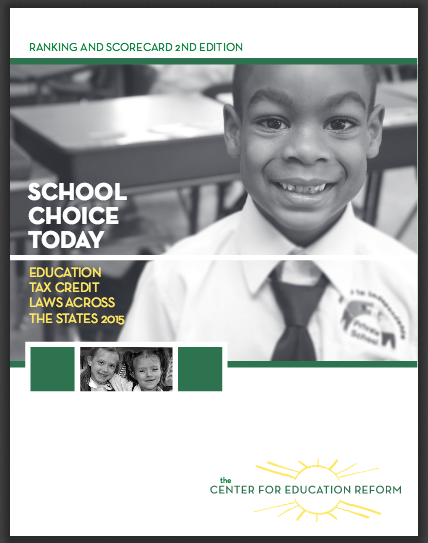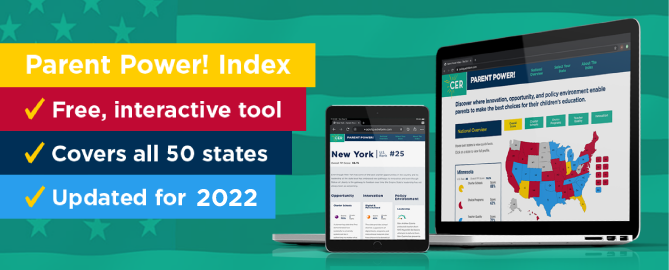Ranking Reveals Significant Differences Among State Education Laws
Second Edition of Education Tax Credit Laws Across the States Evaluates Power in Providing Options
September 30, 2015
Of the 16 states that have education tax credit programs, only five earn grades of A or B on the second edition of School Choice Today: Education Tax Credit Laws Across the States, Ranking and Scorecard 2015 released today by The Center for Education Reform (CER). A majority of the states earn C’s, while three earn D’s and one earns an F. The report provides analysis and state-by-state comparisons, ranking states not only based on the law itself, but real results of programs.
“Over 200,000 students are benefiting from tax credit scholarships today,” said Kara Kerwin, president of The Center for Education Reform. “As the momentum for choice programs grows, with half of these 16 states enacting tax credit programs in the last three years, it’s essential to evaluate which elements foster the creation of meaningful choices to the most number of students. Simply having a law alone does not translate into more and better opportunities for children.”
The Edu cation Tax Credit Laws Across the States Ranking and Scorecard 2015 methodology has been revamped from last year’s analysis, placing greater emphasis on participation and implementation, and taking a deeper look at rules and regulations governing programs. There are four major components that determine the strength of high-quality education tax credit programs across the states:
cation Tax Credit Laws Across the States Ranking and Scorecard 2015 methodology has been revamped from last year’s analysis, placing greater emphasis on participation and implementation, and taking a deeper look at rules and regulations governing programs. There are four major components that determine the strength of high-quality education tax credit programs across the states:
• Participation and purchasing power
• Eligibility
• Credit design
• Operational autonomy
“States that implement tax credit programs well will see reductions in overall expenditures in addition to growth in investments in K-12 education,” continued Kerwin. “This fairly simple concept of allowing individuals, businesses, or both to claim a tax credit for contributions made to scholarship organizations provides big benefits, with the most important being a shift in the power to choose a school from bureaucrats to parents.”
“The goal of this ranking and analysis is to provide a roadmap for lawmakers, parents, and advocates to bring about substantive and lasting change,” said Kerwin. “We look forward to furthering debate and discourse to ensure laws being enacted are indeed fostering a marketplace where parents have the power to make choices among excellent options.”














